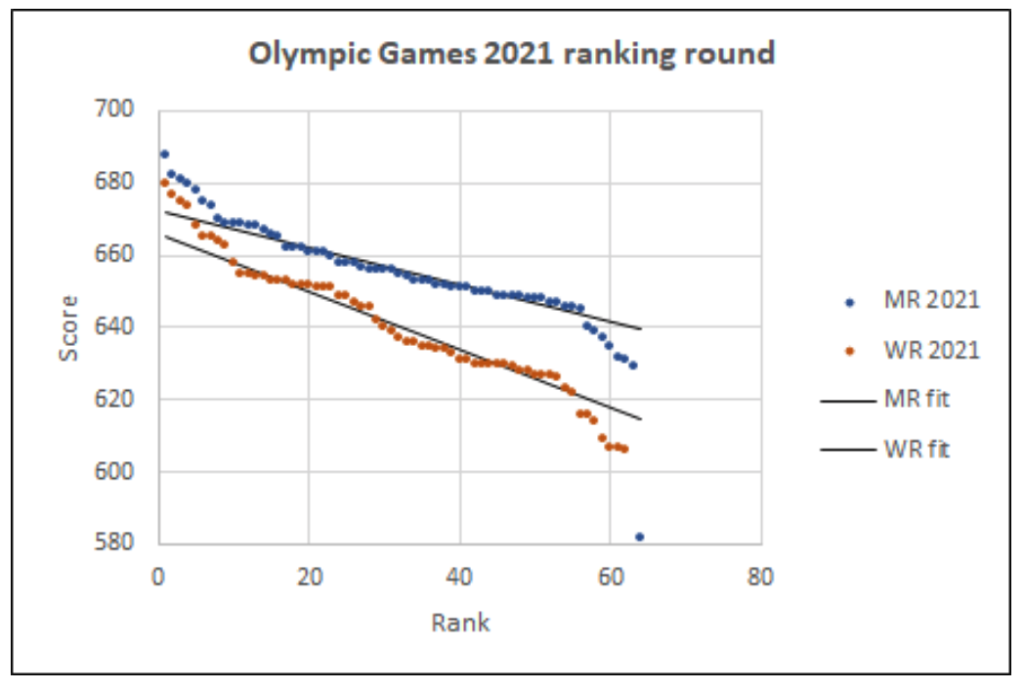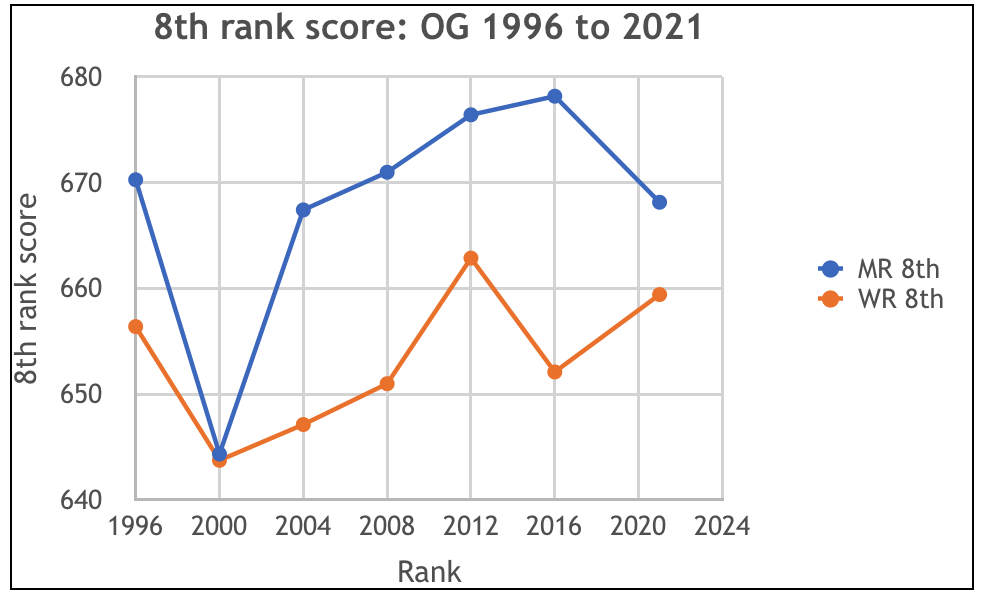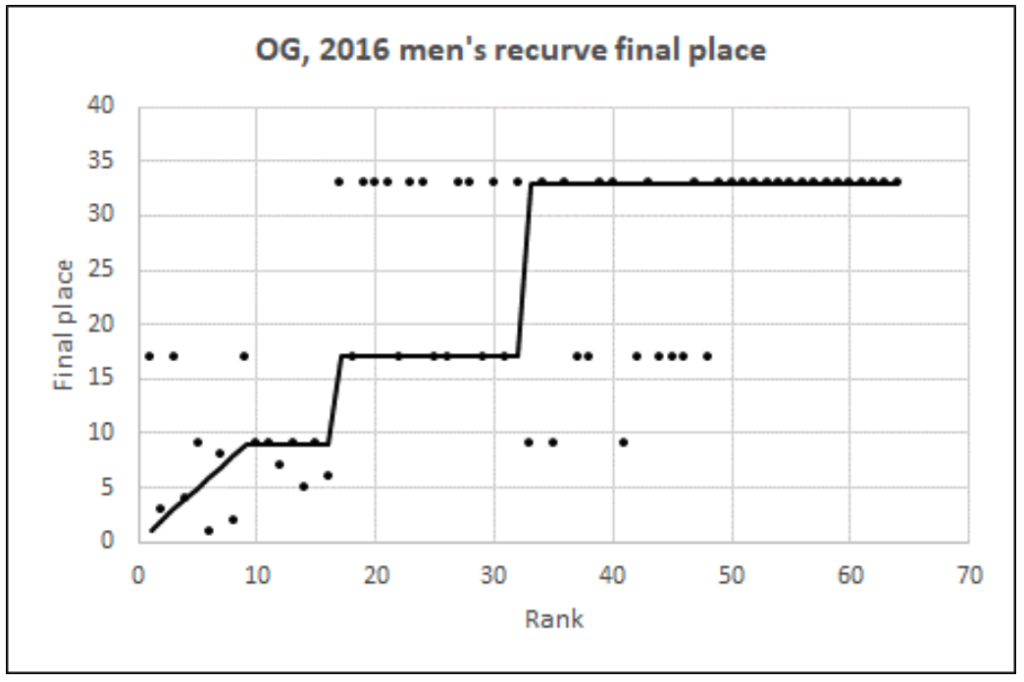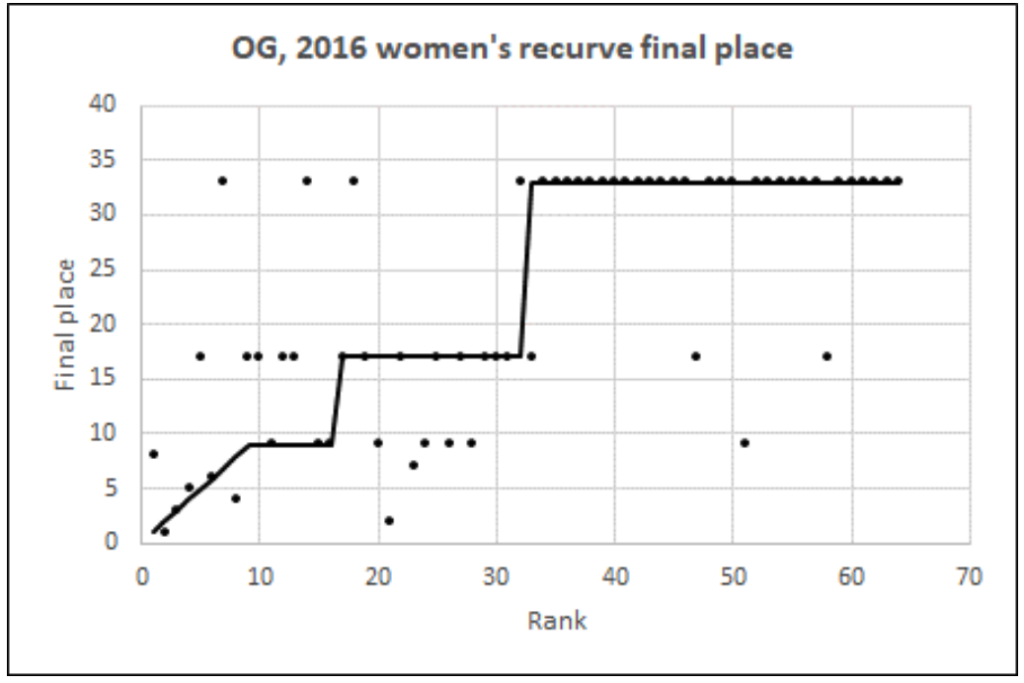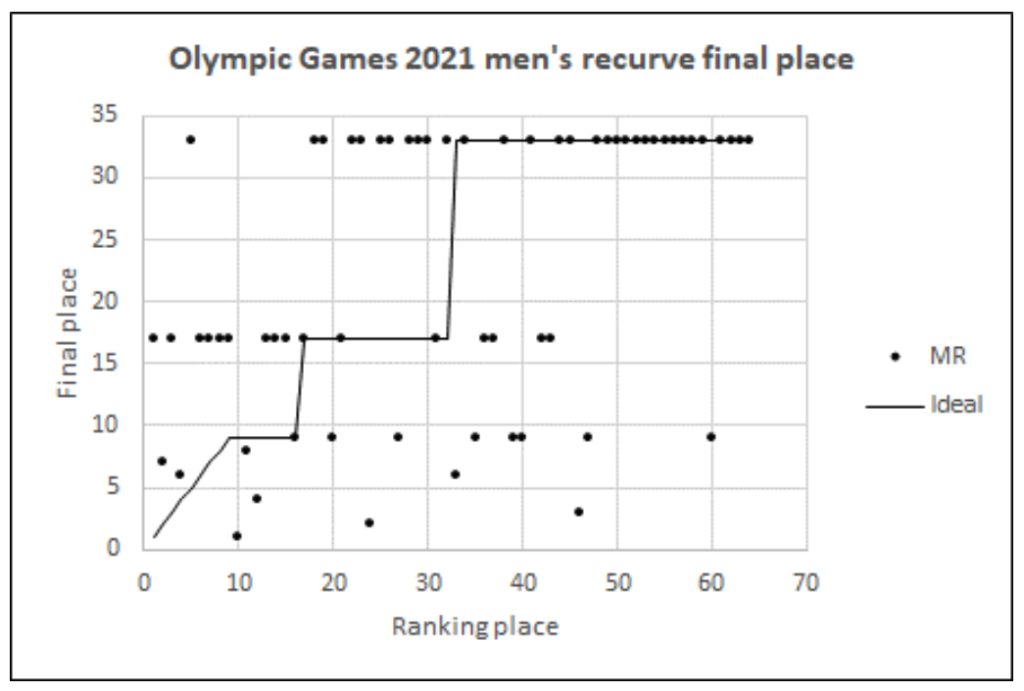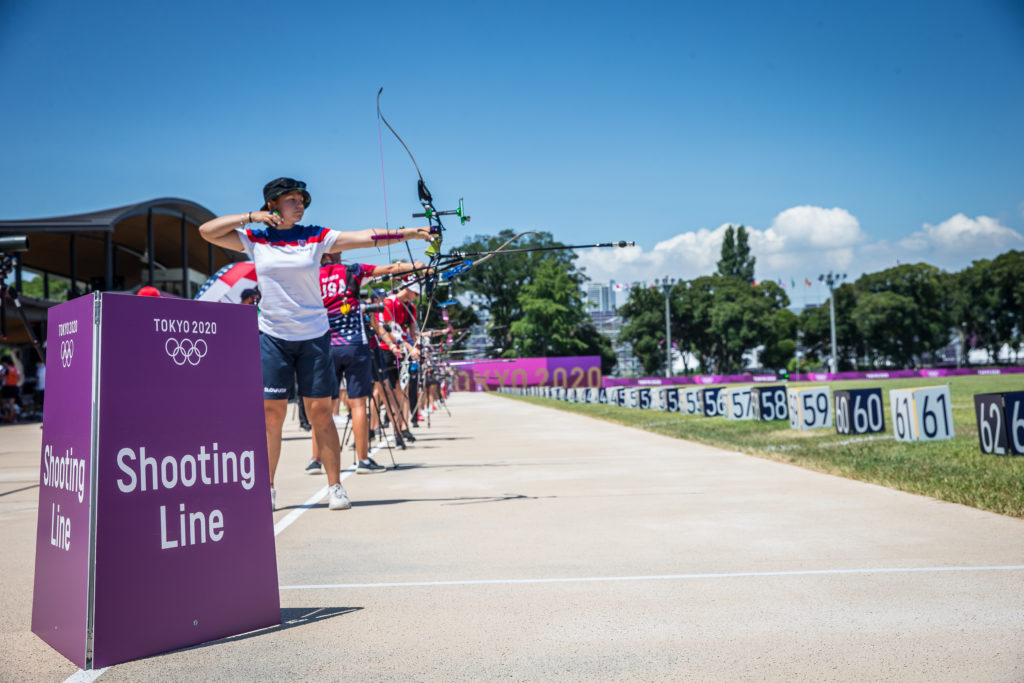Challenging conditions in Tokyo? James Park runs the numbers
As the Australian compound coach, I watched the Olympic Games archery from COVID lockdown in Melbourne rather than from Yumenoshima Park. The coverage of the event in Australia was excellent – I was able to watch every match in high definition.
We did not get to see the ranking rounds, but I ‘watched’ them end-by-end on the Ianseo website. Working from home during lockdown did have at least one advantage.
For each major world event (Olympic Games, World Championships and World Cups), I plot the scores gained in the ranking round versus ranking place, as I am interested in how the scores change over time. Here they are for Rio and for Tokyo. For Tokyo, I have also added lines of best fit.
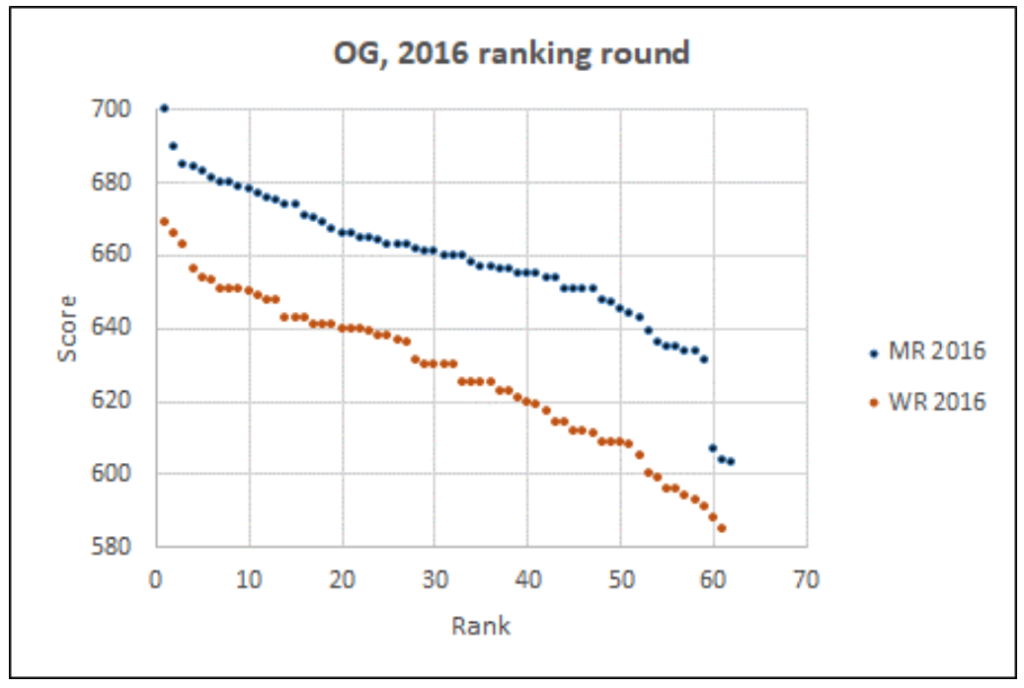
MR = Men’s ranking WR = Women’s ranking
Note that for all of them there is a main portion where scores decline approximately linearly with rank. At the top end there are always a few archers who are above the linear line and at the bottom end there are always a few archers who are well below it.
Having analysed almost every major event since 2000, I have found that the eighth ranking place is almost always on or close to that linear portion and is a good indicator of the score levels at the event and of how they have changed over time. It is shown in the following chart for each of the Olympic Games from 1996 to 2021 (prior to 1996, the WA1440 round was used).
The eighth rank score shows a general increase from 2004 to 2016. The men’s scores in Sydney in 2000 and in Tokyo in 2021 were noticeably lower than the trend (2000 particularly so). That is a good indicator of the difficulty of dealing with the weather at those events for the men. London 2012 seems to have been particularly kind to the women (and as the Australian coach in London, I remember the conditions to have been quite good, as was the event as a whole).
In several of my published papers, I have shown that most archers shoot at the same skill level in both ranking rounds and matches, with a small number of interesting exceptions. That means that the higher-ranked archer has a higher probability of winning a match than a lower ranked archer.
However, we can still expect to get some upsets, particularly where the two archers were ranked similarly. Over an event we can expect to see the higher-ranked archers fill most of the top places after the matches and to win most of the medals. This can be seen in the following charts for the Rio Games:
In these charts, if the higher-ranked archer wins every match, the final places for the archers will lie along the solid lines. The most likely upsets can be expected around ranking places 32-33 and 16-17 where archers of similar abilities meet in matches.
Usually all of those ranked lower than about 40th lose their first match and get a final ranking of 33rd, and after two matches most of those ranked below about 25th have lost. Those losing the second match get a final ranking of 17. Very few archers ranked higher than 33 make it through two matches: in Rio it was just three men and one woman and they all lost the third match.
The charts for Rio are similar to those for most other major events, as is the chart for the women in Tokyo; however, the chart for the men in Tokyo was different. In Tokyo, two women ranked 33rd or higher got through the first two matches but lost the third, while for the men it was seven with two of those making it into the top eight. The top eight places were distributed between archers ranked second to 46th, which is most unusual.
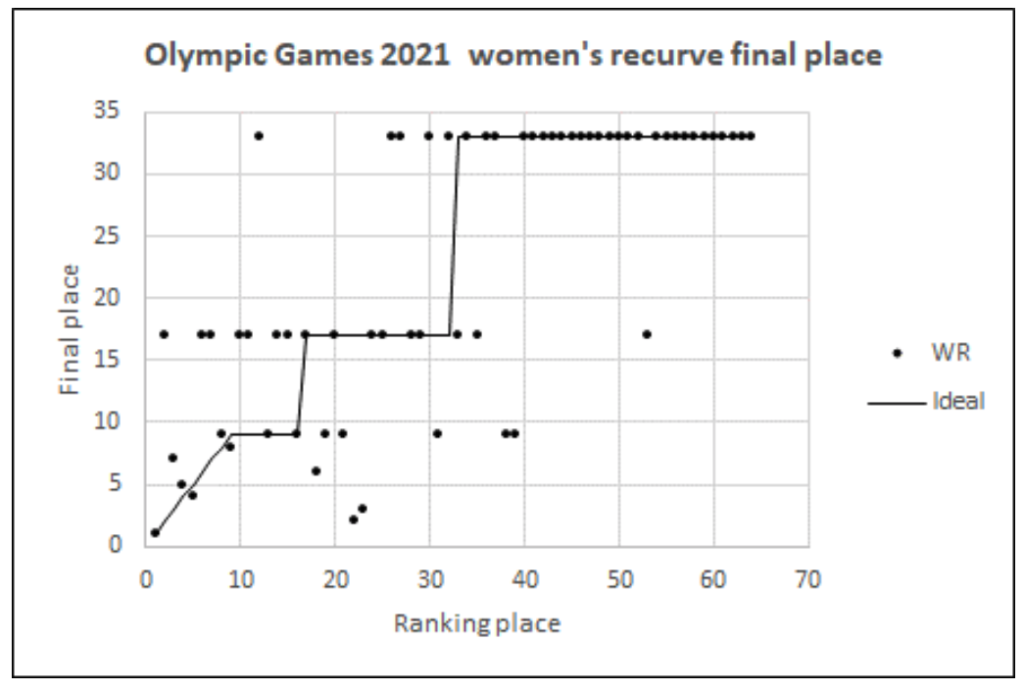
I surmise that the difficult conditions during the men’s ranking round led to both lower scores than usual and to some archers perhaps ranking lower than would be usually be expected. As far as I could tell from the screen, conditions were not easy during the matches and that would also lead to the results above.
One interesting archer to watch is Florian Unruh from Germany. He is one of the few archers who shoot at a higher level in matches than in ranking rounds. He ranked 33rd and then proceeded through to the top eight, finishing eighth.
Many archers complained of unpredictable winds on some days, although this is a common complaint at all levels. In difficult conditions it is important to use small diameter, high mass arrows. As far as I could determine, all but a handful of the archers were using X10s, which are a good choice [other arrows employed include the Fivics Five-X and the Carbon Express Nano Pros – Ed].
Poundage: making the difference?
I also noted that Mete Gazoz, the men’s gold medallist, is tall and uses a high draw force and Mauro Nespoli, the men’s silver medallist, uses a very high draw force, giving both a nice advantage in the gusty winds.
Gazoz was shooting 53lb for the past couple of years but according to his coach, Goktug Ergin, he dropped to 52lb for better grouping with 350 spine arrows, and “he didn’t even feel it”. Nespoli, as noted in previous issues of Bow, has been known to use poundages between 62 and 67lb on the fingers, by far the highest of the elite men. (Elite Korean archers are not noted for using high-poundage bows generally, as their training volumes are so high.)
While previous Olympic gold medals (such as Chang Hyejin’s in Rio) have been won with archers shooting a relatively low poundage, it is notable that in more difficult conditions, the two men finishing first and second had a weight advantage over the rest of the field.


